Review Summary
Expert Rating
OPPO has been pushing out a bevvy of elegant phones as part of its Reno series for some time now. The OPPO Reno7 Pro 5G is the most recent release from the company and it kicks off the company’s new year with a bang.
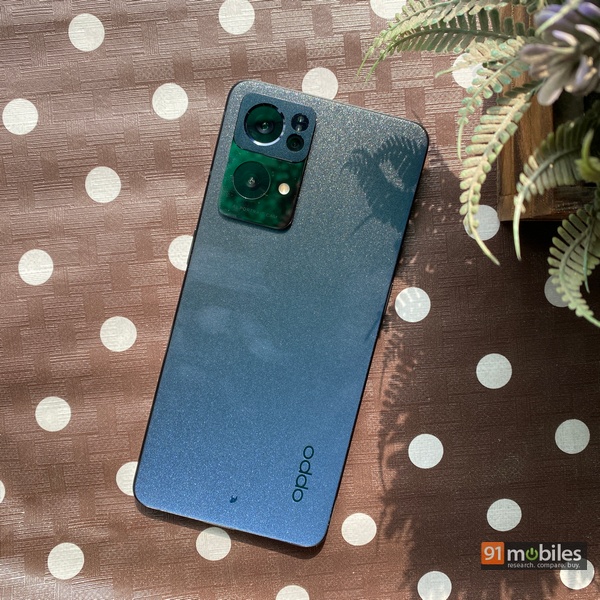
OPPO is singling out camera performance as the key selling point for the Reno7 Pro, which includes obtaining the services of Sony’s IMX707 sensor. This is the first smartphone to do so, in fact. Apart from that, the general specs sheet looks solid enough to warrant a thorough inspection of the device. Will this year be OPPO’s to claim in the affordable flagship space? Let’s find out in this review.
Table of Contents
Verdict
The OPPO Reno7 Pro definitely wins a lot of style points for its design and in-hand feel. The cameras are up to the mark and the display is colour accurate to a very high degree. However, performance relative to the competition does leave you wanting for more, especially when the price is brought into the equation.
Design and display
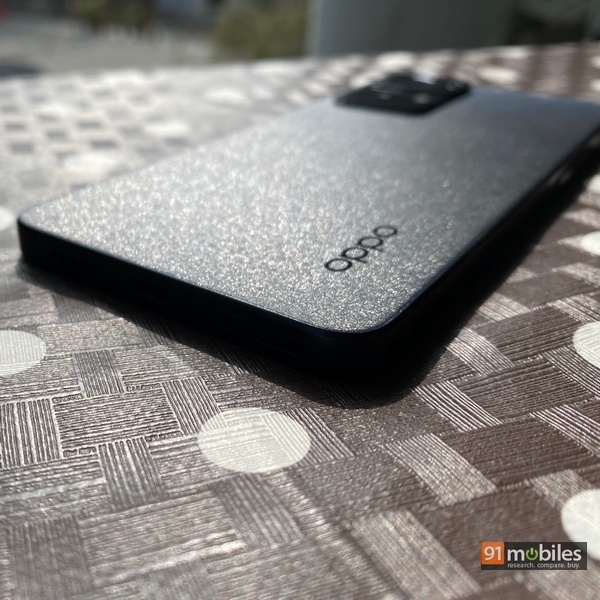
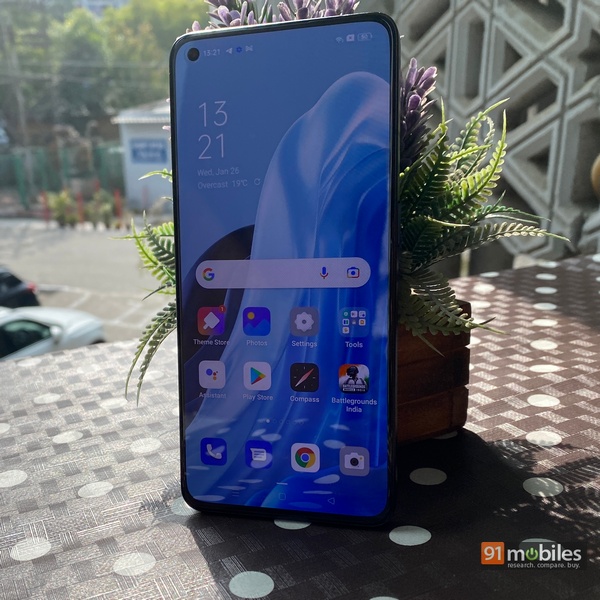
The 6.5-inch AMOLED panel is quite capable, boasting HDR10+ certification and a refresh rate measuring at 90Hz. The punch-hole at the top fades away from existence as you lay your eyes on the exceptionally colour-accurate screen. At 20:9, the aspect ratio is narrow enough for my thumb to traverse the device’s width without difficulty. Touch latency is quite good but I do wish that OPPO had included a 120Hz panel to add that touch of extra fluidity in animations and scrolling. Owing to the display’s OLED nature, contrast ratios are excellent with colour calibration options available to your liking and deep blacks accentuating the visual quality. The device would have been a grade-A media consumption machine but for the lack of 120Hz refresh rate being offered by the competition in this price segment.
Cameras
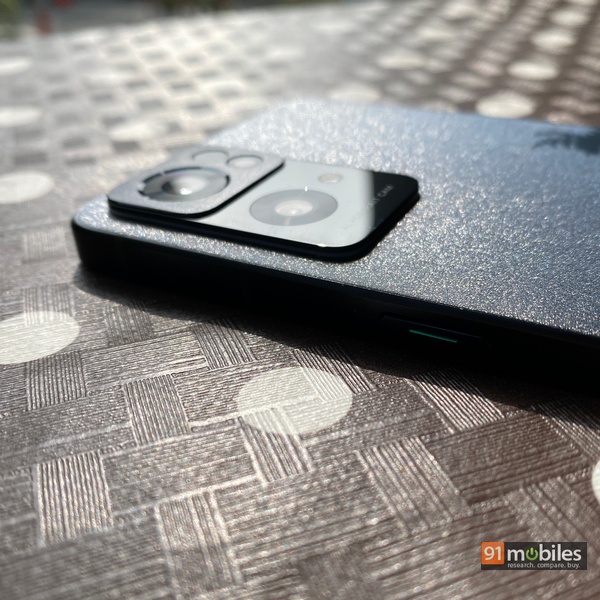
Cameras have been the cornerstone for much of OPPO’s innovation in these past few years. The company is determined to cram in the best possible sensors to eke out nice-looking photos. The 50MP IMX766 sensor from Sony is being utilised as the primary shooter on the phone and is supported by an 8MP ultra-wide lens, 2MP macro camera, and a colour temperature sensor. The front of the device harbours a 32MP Sony IMX709 selfie camera which is also a first in the smartphone world. My usage of the Reno7 Pro’s camera generally returned quite favourable results. The large sensor size allows for more light to seep in while the OPPO-centric post-processing has been cut down to acceptable levels. Dynamic range is excellent although I was not able to realise the full potential owing to the rather gloomy and overcast skies. OPPO has rebranded its Croma boost feature as AI Color Portrait but in essence, the oversaturation levels remain unchanged and the mode is fully recommended to someone invested in heavy social media use.
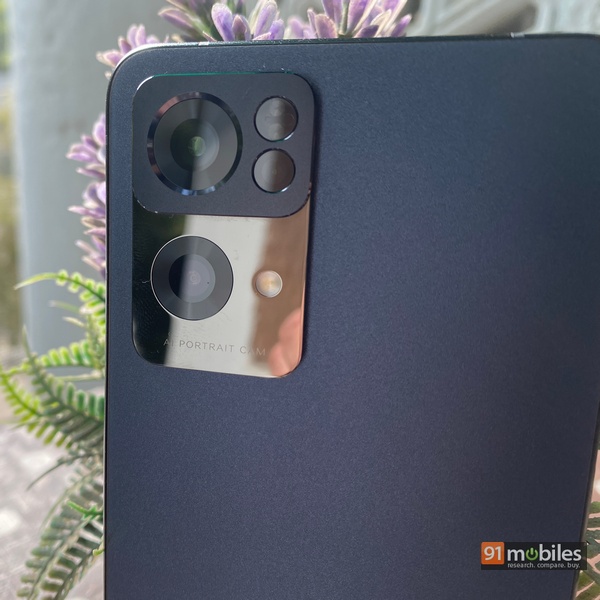
While the sensor remains 50MP, OPPO uses its sub-pixel interpolation to enhance the picture’s final resolution to 108MP. I found that these images lacked the general dynamic range being offered on the regular pixel-binned 12.5MP shots. As far as the detailing and focus speeds are concerned, OPPO has nailed both of them. Shutter speeds did seem to be a slight problem even though OPPO claims it has an Image Clear Engine to capture super quick shots. Portrait mode shots get an additional feature of choosing between 25 levels of adjustment to the aperture which allows for a varying depth of field. There is also a Bokeh Flare effect that can be applied on both the front and rear cameras and allows you to get different styles of bokeh. The low light capabilities are more than satisfactory for casual photography. Natural colours can be seen in the shots, and shadows and highlights are mostly well defined. The sensor locks on to the subject within 1-2 seconds and I was particularly happy to see the exposure slider’s fluid movement. However, the night mode has the tendency to overexpose nearly every time, and even more so in areas of assisted lighting.
The ultra-wide shooter has a wide field of view and minimal distortions across the edges. The focus is spread equally across the frame and brings in reasonably sharp details of the landscape. However, the 2MP macro sensor is mediocre and I believe it is partly due to the rather low resolution of the sensor and partly the good influx of light needed to get a decent picture. As for the Colour Temperature sensor, I found no use worthy of mention in this review. Videography on the device is about as good as the competing devices with a maximum output of 4K @ 60fps. The IMX766 also comes with PDAF and Focus Tracking features which vloggers should find good use for. Something else that would interest social media influencers is AI Highlight Video which promises good portrait videos by detecting whether you’re shooting at night or with bright backlight, but I found colour saturation levels a bit iffy. OPPO’s video editor SOLOOP can be used to make quick videos with a variety of filters, music and templates.
Finally, there is the 32MP selfie camera which clicks crisp, colourful, but overprocessed selfies. There is clear masking of facial details, and there are a ton of filters present to suit the need of any Instagram influencer. OPPO has used DOL-HDR to capture two shots of varying exposure to make the resultant image looks more vibrant, but I think it mainly just increases the saturation levels. A more useful feature is the selfie camera’s automatic detection of several people in the frame wherein it switches to a wide-angle shot automatically. In a nutshell, OPPO has made some clear strides in the photography department with more than decent photos being churned out, albeit a bit overexposed and overprocessed in some scenarios.
Performance and software
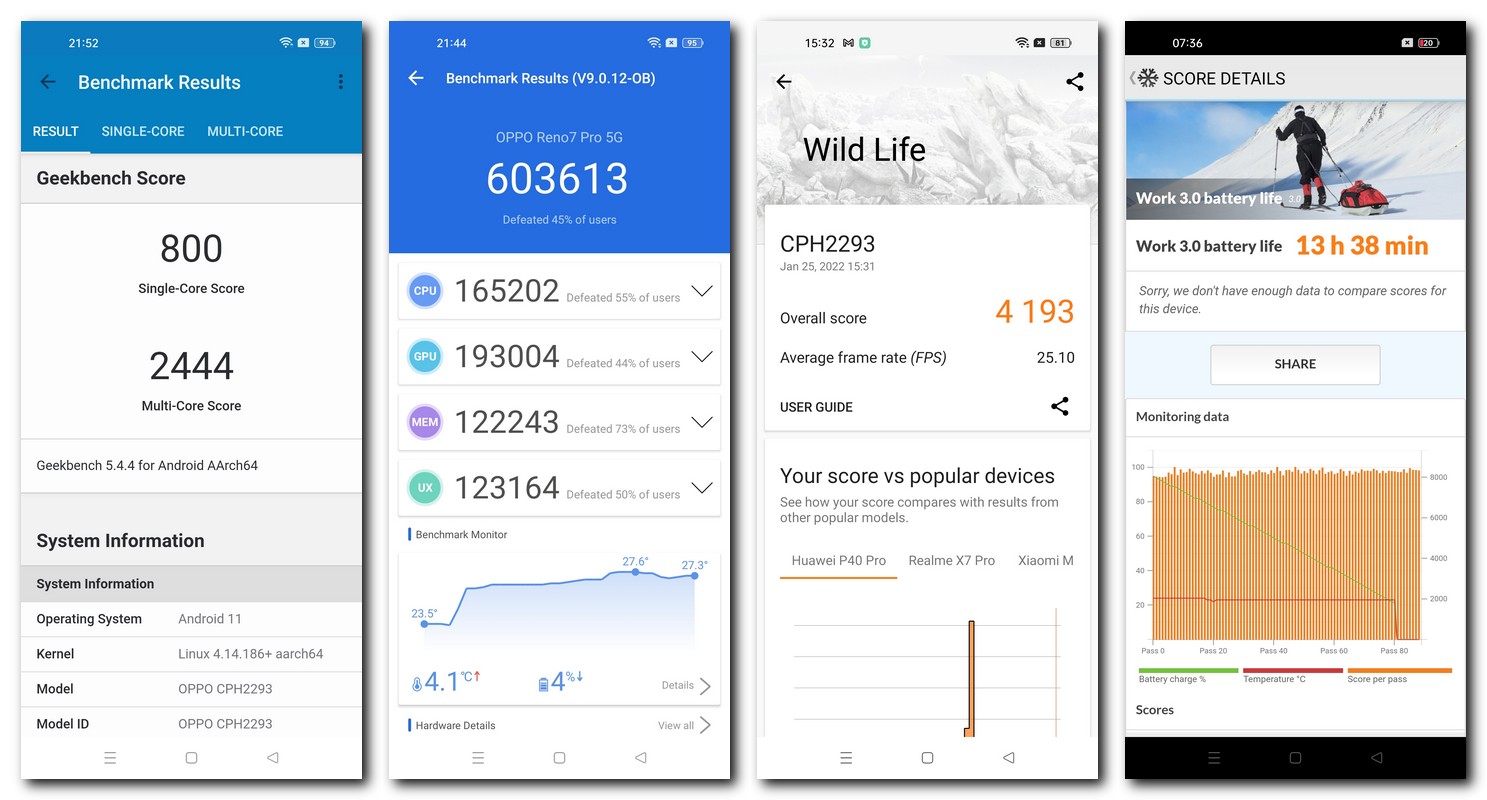
Speaking of the Reno7 Pro’s performance, the device is running MediaTek’s flagship Dimensity 1200 Max chipset under the hood. OPPO claims it has customised the silicone to “provide a much-enhanced display, better imaging, and video clarity.” Unfortunately, these can’t be measured in a quantitative manner and none of the extra features pertain to improved performance. I ran a couple of benchmarks on the device and the results were more-or-less in line with previous Dimensity 1200 phones. On Geekbench 5’s multi-core test, the device scored a healthy 2,444 while on Antutu the score was 603,613. Both are expected scores for a phone in this price range and the general performance experience is smooth and lag-free. The usual tasks such as switching between apps and regular Chrome usage are a piece of cake. Editing a video for Instagram Reels uses up considerable resources and drains the battery rapidly but renders the footage efficiently.
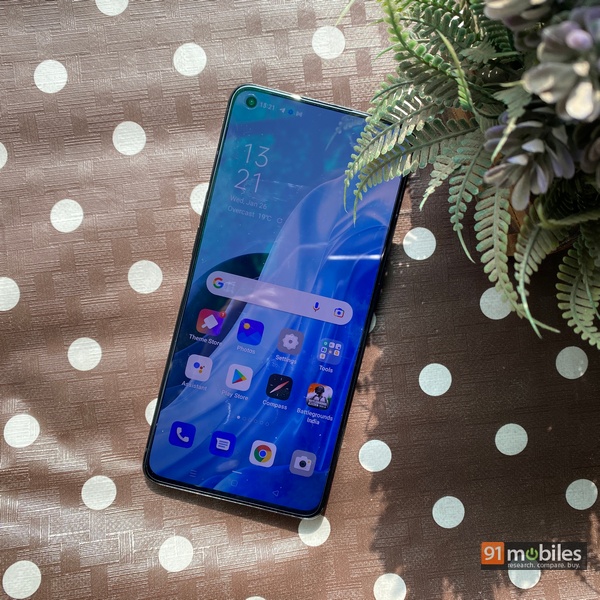
OPPO has customised a few features for a more immersive mobile gaming experience. The haptics includes an X-axis motor for better vibrational feedback, although to me the response was slightly jagged. A 1,000Hz touch latency experience is also offered on the device but only for League of Legends Mobile. As for BGMI, the maximum frame rate setting of 60fps could only be set on Smooth graphics quality. I did find that the device heated up a bit, but it didn’t translate into frame drops. A multitude of apps can stay open in the background without issues thanks to the 12GB DDR4X memory present inside the device which can further be boosted by up to 7GB by borrowing some of the space on the 256GB internal storage.
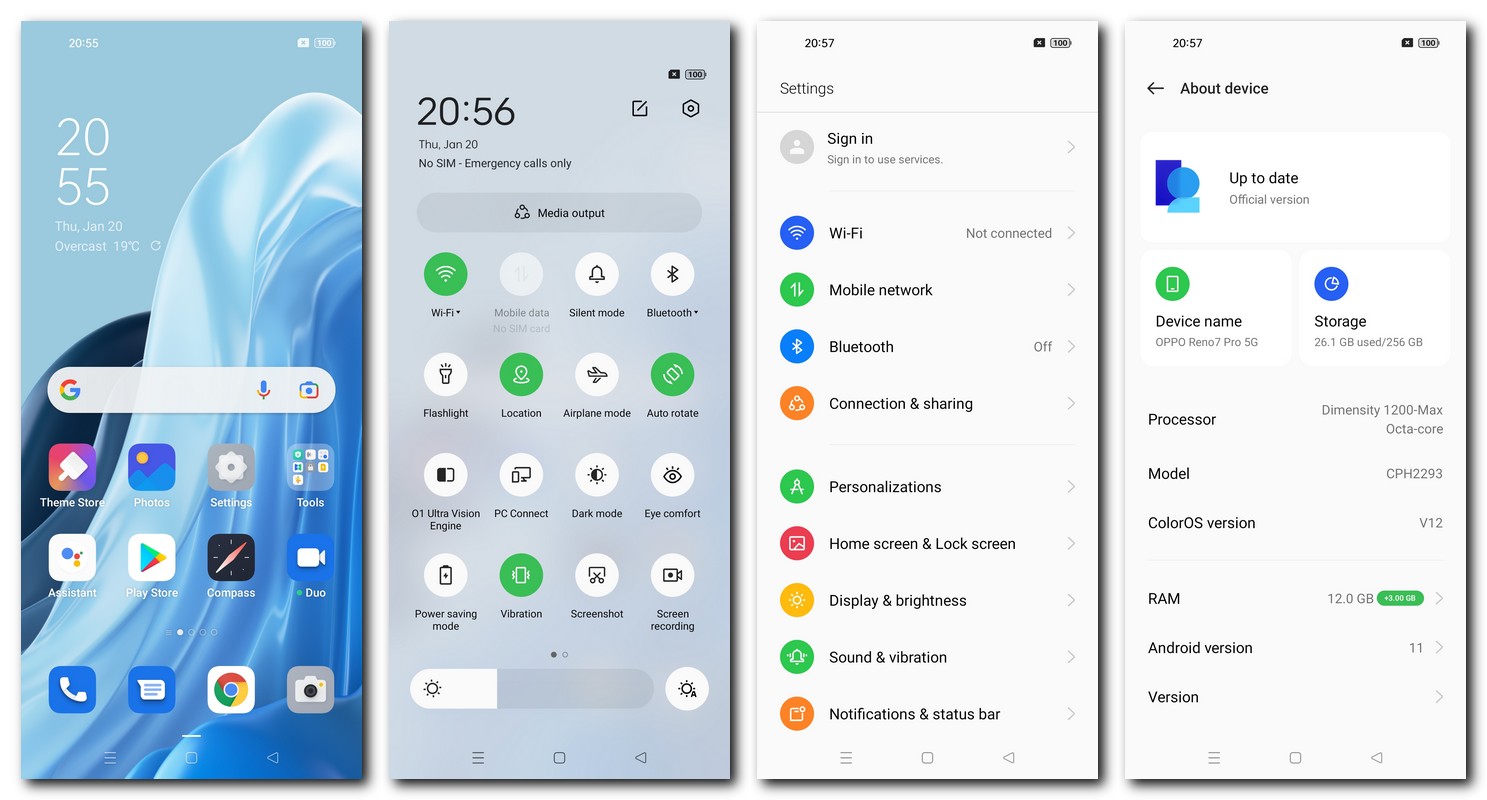
The speakers on the Reno7 Pro are dynamic and rich in sound which pairs along well with the good visual experience. The under-screen fingerprint sensor works flawlessly on most occasions. As for the face unlock mechanism, its functionality is quite dependent on lighting conditions. The phone has 5G capabilities but unfortunately due to Indian telecom infrastructure’s inability to transmit 5G waves, there can be no conclusion drawn as of now. Jio’s 4G LTE speeds and connectivity in Noida were up to the mark as were the earpiece and microphone functionality.
OPPO’s ColorOS 12, based on Android 11, is running on the Reno7 Pro 5G. The company has watered down its UI and design elements considerably over the past years. While the experience is in no way as clean as stock Android, which is my personal preference, the interaction is quite user-friendly. I particularly enjoyed the various themes that could be applied and the personalisation options that are on offer along with each theme. OPPO has implemented a Memoji-style 3D emoticon called Omoji which can be added to your always-on display and the company claims it has over 200 accessories and dynamic expressions. OPPO’s PC Connect app allows seamless connectivity of the Reno7 Pro with a PC via Bluetooth. There are also some new privacy benefits of ColorOS 12 such as the anti-peeping notifications feature which hides notifications when the camera senses someone else looking at your screen. To know more about ColorOS 12, you can read my colleague’s detailed article explaining the new features here.
Battery
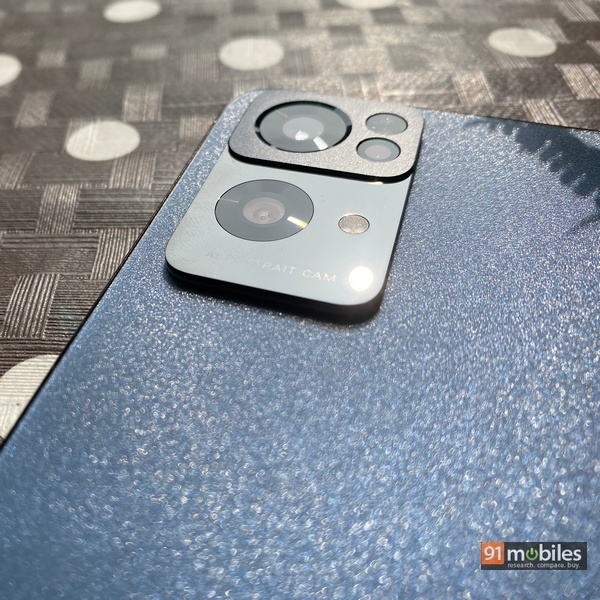
In terms of battery life, OPPO has provided a 4,500mAh cell that charges at 65W thanks to the company’s proprietary Super VOOC charging technology. The Dimensity 1200 Max’s 6nm fabrication does help in power efficiency but I still ended up looking for a charger by the end of the day. On PCMark’s battery test, the device got a decent score of 13 hours and 38 minutes. The superfast charging helps, and juices up the phone to 100 percent in about 35 minutes.
Final verdict
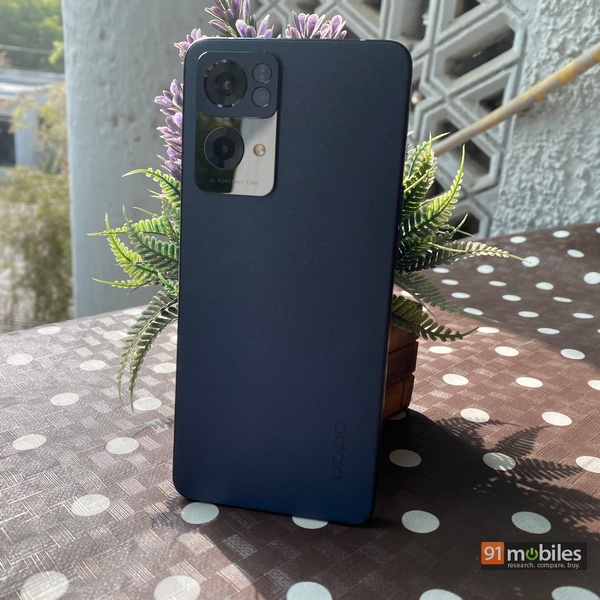
OPPO has excelled in creating a comprehensive smartphone experience with a few caveats. Like with a few other Reno smartphones in the past, the pricing of the device seems to be on the higher side. In its price range, the Reno7 Pro is outstripped in terms of performance and display metrics by the likes of the OnePlus 9RT (review) and even the recently announced Mi 11T Pro (review). However, full merit must be given to the Reno7 Pro’s thin and light design language which remains unmatched in the segment. If you’re not a serious gamer, but appreciate the good camera performance and supreme in-hand feel offered by the Reno7 Pro 5G, you should definitely take a closer look.
Editor’s rating: 3.5 / 5
Pros:
- Excellent design
- Good camera performance in daylight
- Colour accurate display
Cons:
- Pricey relative to the competition
- Misses out on Android 12
 | Rs. 30,900.00 | Go To Store |


































